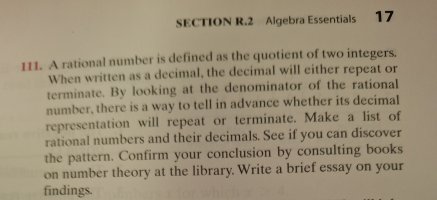sunset_park
New member
- Joined
- Jul 28, 2024
- Messages
- 1
A rational number is defined as the quotient of two integers. When written as a decimal, the decimal will either repeat or terminate. By looking at the denominator of the rational number, there is a way to tell in advance if its decimal representation will repeat or terminate. What is the best and fastest way to tell in advance if the decimal representation of a rational number will repeat or end?


